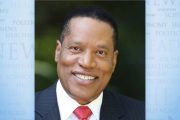
The Washington Post called it the “laughing stock of conservatives.” The Washington Times dubbed it just plain “creepy” (albeit “amateurish”). But any way you look at last week’s launching of Team Obama’s interactive website, “Attack Watch,” there is more to it than a casual mouse-click.
The only news entity that provided serious detail, complete with photos and an updated video ad promoting “Attack Watch” was Tom Mannis in a report published at Chicago News Bench’s online service on September 13. Mannis has long been following Obama’s career, given that Obama came out of nowhere and suddenly shot to liberal stardom in Chicago:
Mannis explains that www.AttackWatch.com is a subcategory of www.my.barackobama.com, produced by Obama for America, the President’s publicity/campaign organization. There, Americans are asked to report “smears” — which, in practice, can range from verbal attacks, to ridicule, to group protests — against Obama himself, his policies, or his administration. If a Republican President (or any entity calling itself “conservative”) had set up an automated page (see inset) for supporters to report dissenters, the news would have been the leading headline and top TV story everyone got before breakfast, prompting calls for immediate impeachment hearings.
The Obama White House tried this once before in 2009 under a different name, when Team Obama sought to rein in criticism of the President’s then-pending health care legislation: “If you get an email or see something on the web about health insurance reform that seems fishy, send it to [email protected].” Being issue-specific, it didn’t sufficiently resonate with Obama loyalists, so his PR team is trying again with “Attack Watch.”
Understand that any snide remark, derogatory caricature (such as “Obamaniac”) or even an honest reservation bearing no ill-will, can nevertheless be construed as “fishy.” In Nazi Germany and Stalin’s Russia, such slights often came via a neighbor, a co-worker, fellow student, a family member, a passenger at a bus stop. Obama’s 2009 attempt advised that if something “doesn’t sound quite right,” a good citizen (implying a true “loyalist” or “patriot”) should give the White House a heads-up via the “flag” website. Miss these re-definitions of political correctness and, like much of the mainstream media, one misses the serious turn the country has taken.
The Clinton White House did something similar in 1996 — a scandal most people have forgotten. A “supersecret federal information system,” technically called the White House Office Data Base, but nicknamed “Big Brother” by the insiders who used it, employed a sophisticated computer technology to intimidate citizens. Prompted by a Government Accounting Office demand for an audit after noting the apparent conversion of highly sensitive software from one “platform” to another, a download revealed that the Clinton White House’s 1996 “Christmas card list” contained some 2,045 FBI files and more than a few IRS files. No one could think of any use for such information in a White House setting except for purposes of intimidation.
The White House Office Data Base scandal had all the intrigue of a complex spy novel — a former CIA informant; a questionable procurement; and a specialized software program, PROMIS (Prosecutor’s Management Information System) associated with the National Security Agency. When Hillary Clinton was later sued by whistleblower Sheryll Hall and Judicial Watch for illegally using the “social” database for retaliation purposes, the George W. Bush administration, incredibly, gave the go-ahead for the Justice Department to defend the then-new Sen. Hillary Clinton free of charge, as per a Feb. 20, 2002, press release.
Moreover, the “Attack Watch” story is not really about Barack Obama, Bill Clinton, George W. Bush or any past occupants of the Oval Office. Nor is it about creating “creepy” clandestine lists of “untraceable online donations,” as suggested by the Washington Times’ editorial. It is about a technology that morphs — with every new click of a mouse or touch of a screen.
The important issues are: Where is this “snoop technology” coming from? How is it evolving? Why is it popping up in ways which distract the public from attempts to construct a broad-based, government initiative aimed at spying on citizens?
For over two decades, computer experts have been working to get the bugs out of a variety of data-collection systems (telephone records, credit reports, etc.), merging them with data-mining (opinion profiling and dossier-building) operations, and then relaunching them in non-related venues. The current social-networking craze is helping to sell the idea of “reporting” on one’s neighbor and family as a form of entertainment, moving a concept we once recognized as “snooping” ever farther from “spying” in the public mind.
The truth is, President Richard M. Nixon’s infamous Enemies List looks “amateurish” by today’s standards. What we have now would have made Hitler’s and Stalin’s job far more “efficient” at identifying and weeding out adversaries. While America is not lining opponents up before a firing squad, we do have the capability to divert a career path, ruin a reputation, eradicate status, and remove income — all on the basis of a computerized analysis.
The surprise is that the largest part of the technology which made this possible was via the last place anybody would have looked for it — the education system. This is one reason why every administration since Lyndon B. Johnson has pushed so vigorously to get every toddler enrolled into a government-sanctioned Early Childhood program, preferably one connected to the public school, an entity entirely supported by tax dollars and under the thumb of a cabinet-level government agency having clones in every state.
As this author has described in three books and a piece for The New American, “Tracking Your Digital Trail,” youngsters have been filling out intimate questionnaires and personal surveys in classrooms for years — under the umbrella of standardized tests as well as social studies, health, and sex education surveys. Parents barely gave it a second thought — until suddenly kids came home saying that some of the questions were about Mom and Dad. About their finances. Their methods of discipline. Their attitudes toward current events. Even their medications.
Parents who complained were told that responses were “confidential,” implying both anonymity and untraceability. That was disingenuous. “Confidential” in the legal sense means “need to know” — and apparently parents don’t. Secondly, increasingly surreptitious identification methods are being applied to records — from simple bar-coding to schemes that have state entities assigning identification codes, in accordance with federal guidelines, and then transmitting all their data on students to the federal databases, where private information can be cross-matched with information already in hand from non-school sources, including Social Security numbers.
Most folks weren’t acquainted with the term data-mining until after September 11, 2001, when the failure of federal and state agencies to share information on criminals took front and center stage. The terror attacks of 9/11 provided a certain legitimacy to snooping and linking disparate pieces of information on private citizens, as some might be “home-grown terrorists.”
Few understood the specifics of an additional level of data-mining called psycho-behavioral profiling, which is built around personality and attitudes. Such assessments are based on people’s perceptions, their affiliations, purchases, and interpersonal relationships, all wrested from computers and analyzed by a branch of psychology known as behavioral forensics, often coupled to a specialty in statistics. Obviously, human error dictates that wrong conclusions are frequently drawn. What computer software specialists have tried to do over the past decade is minimize such mistakes and enable analysts to make longer-range predictions about people and groups based on cross-matches from various computerized sources. These now include information gleaned from social and political interactive websites.
The upshot is that predictive profiling is no longer science fiction. People are being assessed, beginning early on, for “deviant” — usually individualistic — tendencies (what we used to call “having a mind of one’s own”) as part of a psycho-behavioral assessment, often under the rubric of mental-health screening. Controversial opinions, unconventional attitudes, or just general quirkiness can scuttle college ambitions, divert career paths, and reduce even the most upstanding citizens to pariah status. Into this legacy falls Team Obama’s “Attack Watch” website, and its forerunner [email protected]. The more innocent it looks, the more dangerous it is, because the whole point, after all, is to not raise suspicion and to promote (not discourage) participation.
The first exercises in large-scale government data collection were in the schools, where, presumably, no one would be looking for anything more significant than which students were eligible for a free lunch. Among them were the Common Core of Data and the Universe Files (both still in existence). Combined, these formed the Elementary and Secondary Integrated Data System (ESIDS).
The ESIDS had serious technical problems that quickly became insurmountable, enabling government to claim it never existed. But in a copy of “The Nation’s Report Card” (released by the National Assessment of Educational Progress), Appendix E clearly cites it. Undeterred, the education establishment continued to push for a national inter- and intra-linkable electronic transfer network as described in a 1985 U.S. Department of Education paper, “Alternatives for a National Data System of Elementary and Secondary Education.” Option A revealed that information-gathering would henceforth include individual schools, teachers, students, and households using interviews by trained personnel sent into America’s cities and towns from the federal level using questionnaires and “other instruments.”
The ESIDS was soon overhauled to include student monitoring by psychologists, as described in “A Plan for the Redesign of the Elementary and Secondary Data Collection Program,” a paper by the National Center for Education Statistics (NCES), which eventually would become the repository for pupil data. The next generation of data systems came online: in particular, the SPEEDE/ExPRESS (Standardization of Post-Secondary Education Electronic Data/Exchange of Permanent Records Electronically for Students, still in existence). The SPEEDE/ExPRESS allowed Longitudinal Studies to dog students into adulthood, long after the original school questionnaires were completed. The nature of queries morphed from self-reports and confession-style, what-would-you-do-if scenarios into political outlook and parent information. And the social-media revolution hadn’t even hit yet!
Most people know, deep down, that computers make it possible to correlate dissimilar and contrasting data points in such a way as to ensure that a person looks bad — by implication or innuendo. Today, job applications interject such questions (True or False: “As a child, there were times I hated my mother and father.” This was one of many questions in a Target store application that was challenged in a 1990 lawsuit). Internet ads scan your computer, and cell phone promotions offer several spying options. What results is a mixture of facts and half-truths. The phenomenon of Internet-based social media lends legitimacy to the latter, especially among young people, who do not have the same view of privacy as their elders. Everything from school psychologists to teen magazines encourages divulging intimate information, thereby creating a culture of snooping and reportage.
Psycho-behavioral software combs this computerized data for controversial opinions, unconventional attitudes, and “outsider” influences. The extent of such activity is revealed in a 2005 document out of Teachers College, Columbia University — an educational icon.
One soon learns that being a “free-thinker” is not necessarily a plus. Teamwork and flexibility have replaced “principle” as a virtue; amenability and compromise are the routes to success. Their opposites are viewed as inflexibility, dogmatism, and “rigidity of thought” — as per a 2003 paper entitled “Political Conservatism as Motivated Social Cognition” (Psychological Bulletin 129(3): 339-375, online here. Thus do “firm religious belief” and the nation’s founding ideals assume a bad rap — as “markers” for mental illness.
At last count (Dec. 2008), some 713 separate data elements were being collected on individual schoolchildren, including specifics of religious and political belief previously off limits, as shown in files posted on the NCES website.
All this places Obama’s “Attack Watch” site in a whole different context. If the federal Education Department is employing such levels of sophistication to assess the “appropriateness” of attitudes among children and their parents, how much more will a politically-centered Team Obama do to further a leftist agenda?
_________
Beverly K. Eakman began her career as a teacher in 1968. She left to become a science writer for a NASA contractor, then editor-in-chief of NASA’s newspaper in Houston. She later served as a speechwriter and research-writer for the director of Voice of America and two other federal agencies, including the U.S. Dept. of Justice. She has since penned six books, scores of feature articles and op-eds covering education policy, mental-health, data-trafficking, science, privacy and political strategy. Her e-mail, a detailed bio, speaking appearances and links to her books can be found on her website: www.BeverlyEakman.com.



